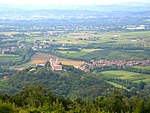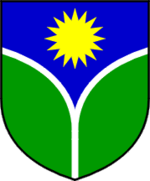Municipality of Renče–Vogrsko
2006 establishments in SloveniaGoriška statistical region geography stubsMunicipalities of SloveniaMunicipality of Renče–VogrskoPages with Slovene IPA

The Municipality of Renče–Vogrsko (pronounced [ˈɾeːntʃɛ ˈʋoːɡəɾskɔ]; Slovene: Občina Renče - Vogrsko, Italian: Comune di Ranziano-Voghersca) is a municipality in the Goriška region of Slovenia. It was created in 2006, when it split from the City Municipality of Nova Gorica. The seat of the municipality is the village of Bukovica
Excerpt from the Wikipedia article Municipality of Renče–Vogrsko (License: CC BY-SA 3.0, Authors, Images).Municipality of Renče–Vogrsko
Žigoni, Renče-Vogrsko
Geographical coordinates (GPS) Address Nearby Places Show on map
Geographical coordinates (GPS)
| Latitude | Longitude |
|---|---|
| N 45.883333333333 ° | E 13.666666666667 ° |
Address
Žigoni 26
5292 Renče-Vogrsko
Slovenia
Open on Google Maps





